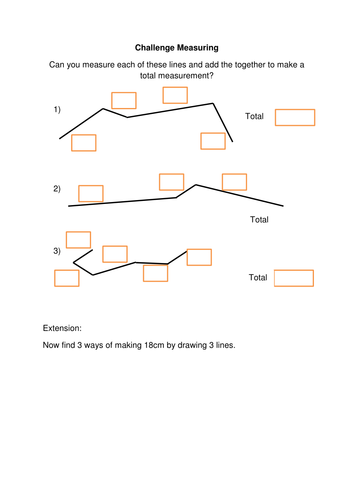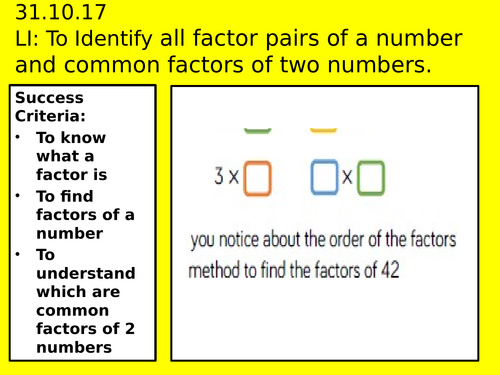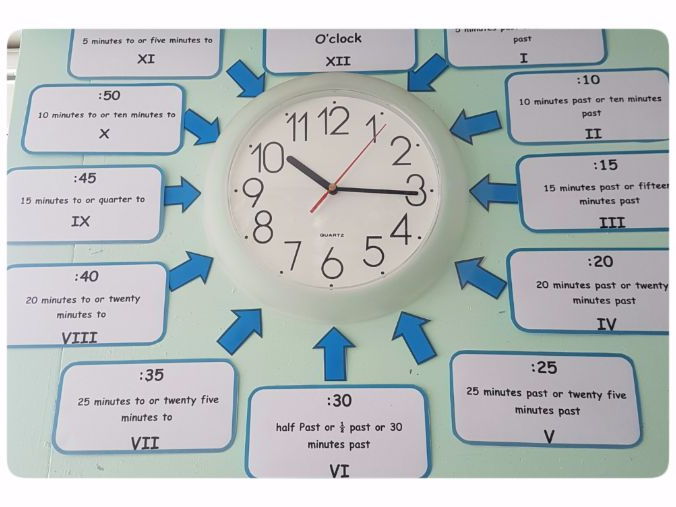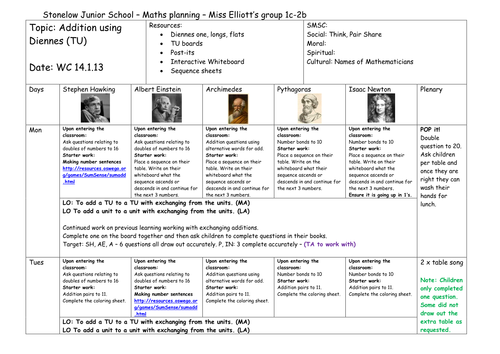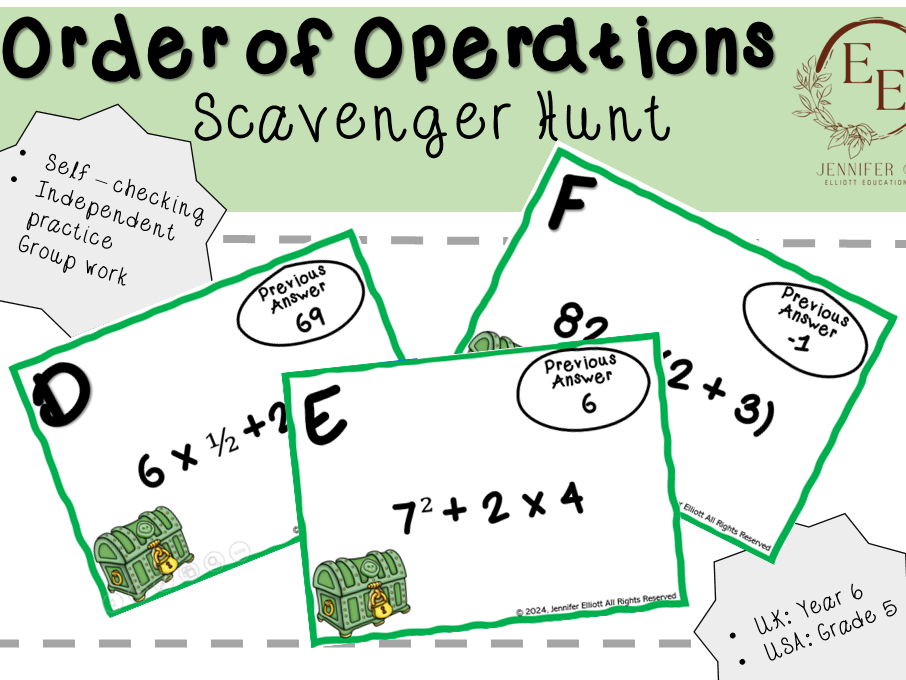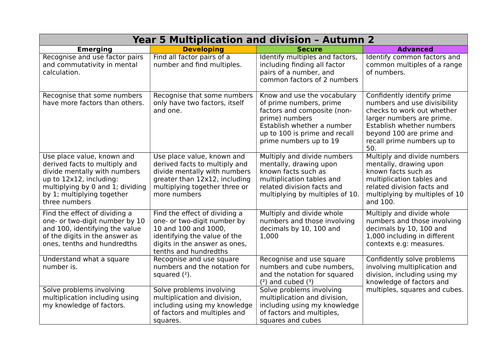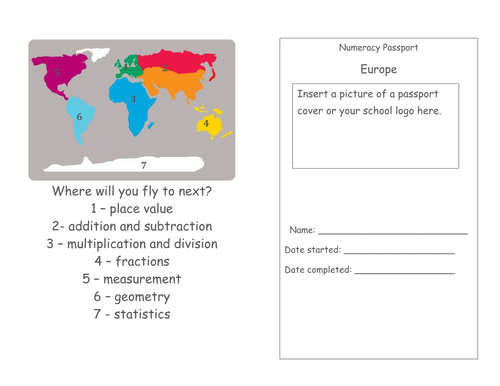
24Uploads
161k+Views
317k+Downloads
Mathematics

MASTERY LESSON - measurement - introduction to length for year 3
Before children move onto measuring the perimeter of a shape or object, this lesson will assess their measuring skills.
The following file contains:
lesson presentation
starter activity
Main lesson worksheet
challenge worksheet
If you follow the White Rose Hub scheme, then you will have covered addition in weeks 3-6 and the challenge task will apply their addition skills in a different context.
This resources covers the following objectives:
- Measure, compare, add and subtract: lengths (m/cm/mm).
- Continue to measure using the appropriate tools and units, progressing to using a wider range of measures, including comparing and using mixed and simple equivalents of mixed units.

Whole unit - planning for multiplication and division following the White Rose Maths overviews - Y5
In this download, you will find all of the presentations and worksheets for multiplication and division for year 5 which is unit 3 from the White Rose Scheme of work
You are free to use your own planning or download mine for a small cost.
Enjoy!

MASTERY MATHEMATICS - labels for your clock (covers words, digital, roman numerals and numerical)
Here are my clocks labels which can work alongside your mastery mathematics lessons.
We all know our days are jam-packed already and we cannot always fit everything in. The following labels work well at anytime of the year and constantly referring to them gives children the opportunity to learn the time all year long.
You can also use these clock labels when teaching time in measurement.
This resources works well with the White Rose Hub weeks 11 and 12 of the Autumn term and covers the following learning intentions:
- Continue to measure using the appropriate tools and units, progressing to using a wider range of measures, including comparing and using mixed and simple equivalents of mixed units.

KS2: LA (1c to 2c) addition using Dienes
I have used this with my LA group of children. There are a couple of days missing as we had a snow day and I was off ill but I said i would post this for another on the frums in case they wanted it.\n\nI have used a lot of the methods shown to me whilst on the Mathematics specialism course.

Cut and Paste Activity: Place Value - Representing number to 10,000,000 (ten million) Year 6/Grade 5
Cut and paste activity that can be used in the first few lessons of Year 6. Is in line with the White Rose curriculum and has a range of representations to ensure that deeper and more broader understanding of number.
Resource comes supplied with the answer sheet.
If you like this resource, more will be uploaded soon.

Addition (add integers) Scavenger Hunt (Loop Cards) - Year 6 (Upper Key Stage 2)
Complete Scavenger hunt for Year 5 or 6 which tests their knowledge on addition.
This is self-checking format means children can work independently or part of a group to calculate the answer and then move onto the next card. Eventually, if they get the answer correct, they will end where they began. Children can begin on any card as it will still loop around.
Really good for:
Self-marking
independent practice
group work
active learning
resilience
The pack will contain examples of: place value counter addition, Base 10 addition, decimals, money, Roman Numerals, negative numbers, missing number calculations and part-whole models.

Order of Operations (BIDMAS OR BODMAS) scavenger hunt (Loop cards) - Year 6
Complete Scavenger hunt for Year 6 which tests their knowledge on order of operations.
This is self-checking format means children can work independently or part of a group to calculate the answer and then move onto the next card. Eventually, if they get the answer correct, they will end where they begin. Children can begin on any card as it will still loop around.
Really good for:
Self-marking
independent practice
group work
active learning
resilience

Unit 3 of White Rose Scheme - Year 5 - Multiplication and Division Planning
This is two weeks worth of planning which accompanies my presentations and worksheets.
You are free to use your own planning to go with the presentations (that is why I shared those for free)
I split my plan into the following headings
LI
Hook or starter
Fluency work
Problem solving and reasoning tasks
Mathematical talk
Intervention
Notes
I have also included an assessment sheet to go with the unit that can be stuck into the children's books. The headers for this are emerging, developing, secure and advanced.
I tick these off after I have taught every lesson which helps with teacher assessment.

Mathematics targets for books. (Mastery, Emerging, Expected, Deeper learning)
Set of targets to stick in to maths book which cover every unit of work and refer to the new 2014 curriculum for mathematics. These targets cover Year 3 to Year 6.
example target is:
Measurement (from Year 3)
Emerging:
Measure lengths, mass and volume of different objects and find their totals and differences.
Measure the perimeter of regular 2-D shapes.
Say the relationship between all units of measurement.
Say the number of seconds in a minute, days in each month, year and leap year.
Expected:
Add and subtract amounts of money up to £100.
Give change from £10.
Tell and write the 12-hour and 24-hour time using Roman numerals.
Read time to the nearest minute and use a.m./p.m., morning, afternoon, noon and midnight.
Calculate how long events or tasks will take.
Deeper:
Solve problems converting hours to minutes; minutes to seconds; years to months; weeks to days.
Tell the time using 12 and 24-hour clocks and change one to the other.
Measure the perimeter of irregular 2d shapes.
Understand the rule of calculating the perimeter of regular 2d shapes and how this may change when shapes are irregular.

MATHEMATICS - Year 3 targets cards for the new curriculum (7 bands of Mathematics)
These are passport style targets cards for children to use.
Gone are the days of setting individual targets for each child. The new Mastery curriculum for mathematics is designed so that targets should be the same for each child and well placed intervention is used to ensure all children keep up.
The passports are split into the 7 continent (so the children are learning a little geography as well)
1. Europe - Place value
2. Asia - Addition and Subtraction
3. Africa - Multiplication and Division
4. Australasia - Fractions
5. North America - Measurements
6. South America - Geometry
7. Antarctica - Statistics.
If you look on the screen shots you can see two tables. The table above are things the children should already know. I got the children to evaluate themselves on these first and taught to fill those gaps before moving onto the Year 3 targets which are underneath.

